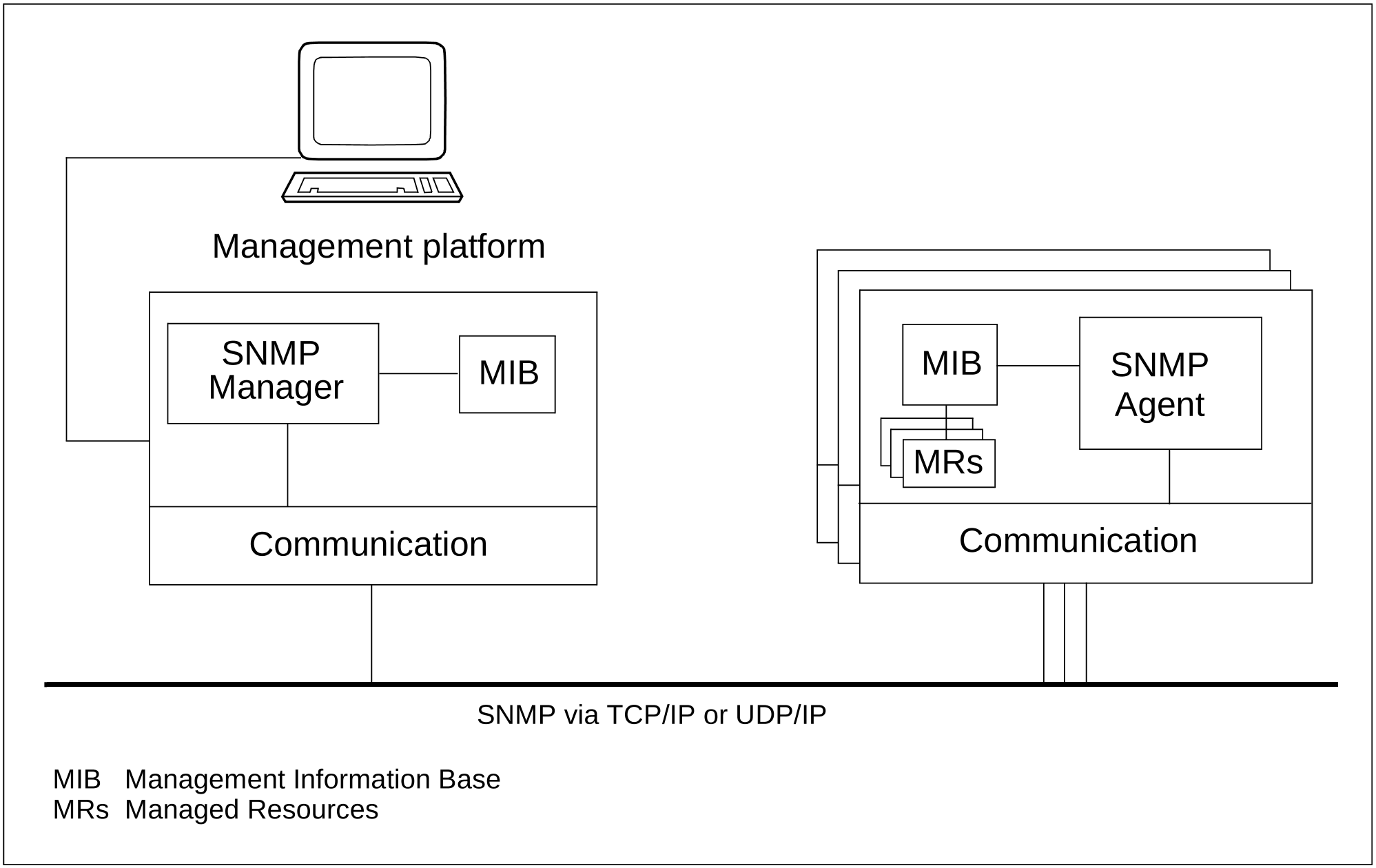The management platform is the central component of an SNMP installation. The management platform provides a well-structured display of the components it manages and offers easy operation. The network and all of its systems and applications can be monitored and controlled from the management platform. SNMP is not fixed to a particular platform.
The SNMP manager, also referred to as management station, resides in the management platform. The SNMP manager is an application that communicates with partner applications, the SNMP agents via SNMP over a TCP/IP network. Each managed component has an agent that provides the SNMP manager with current information about the component. The initiative for controlling the activities mainly rests with the SNMP manager, which ensures that the components to be managed only have to cope with a small volume of management tasks.
The basis for managing the components concerned is an exact description of the parts of these components that are to be administered (objects) in the MIB (Management Information Base). The MIB is the informational backbone of each Management Agent. It contains information on the characteristics, such as name, syntax, access rights and state, of each separate component. Specific MIBs are supplied by many hardware and software component manufacturers. The MIB coding is carried out in ASN.1 (Abstract Syntax Notation One). ASN.1 has been ratified by the ISO as a standard for the presentation layer (see ISO/IEC 8824 and 8825).
Figure 1: Communication between SNMP manager and agents
SNMP protocol elements
The information is transported over the network by means of function-dependent SNMP protocol elements. SNMPv1 only requires four different protocol elements for requesting, setting and displaying values that contain the relevant management information (object values). A fifth protocol element, trap, is used by the agents for asynchronous reporting of important events.
Protocol element | Type | Function |
GetRequest-PDU | 0 | Read request from the manager for a specific |
GetNextRequest-PDU | 1 | Read request from the manager for the next |
GetResponse-PDU | 2 | Reply from the agent with the requested values |
SetRequest-PDU | 3 | Write request from the manager to a specific, |
Trap-PDU | 4 | Asynchronous report from the agent when special |
SNMPv1 protocol elements
The structure of the actual SNMP message is quite simple. It consists of the SNMP header and PDU (Protocol Data Unit). The SNMP header contains a version ID and the Community Name.
The PDU consists of the field for the PDU type and a list of
variables to be read (for GetRequest and GetNextRequest) or
the variable to be set (for SetRequest).
Each variable consists of the name of the object monitored and the associated value. The list of variables that belong to an SNMP message is referred to as variable bindings (short "varbinds").

